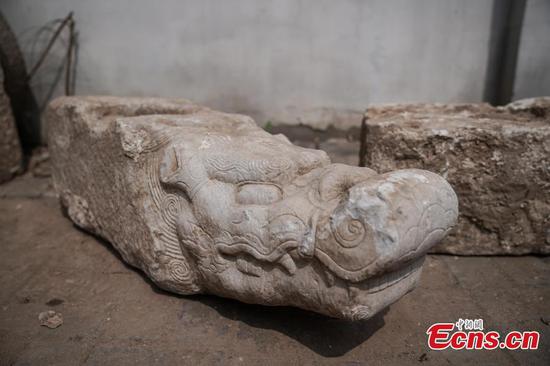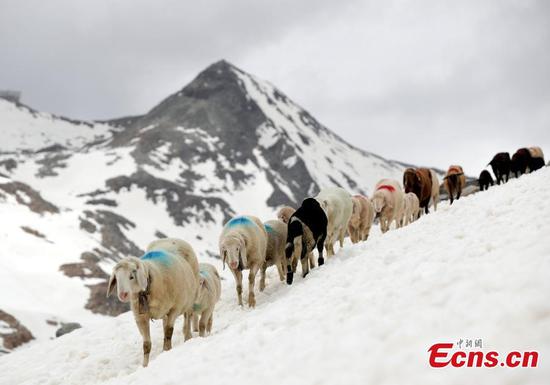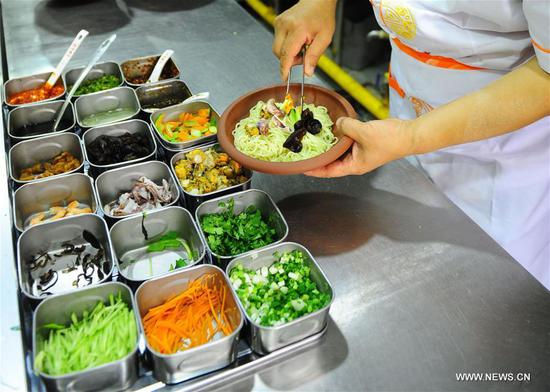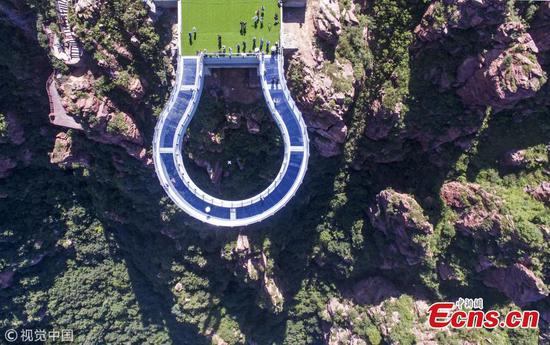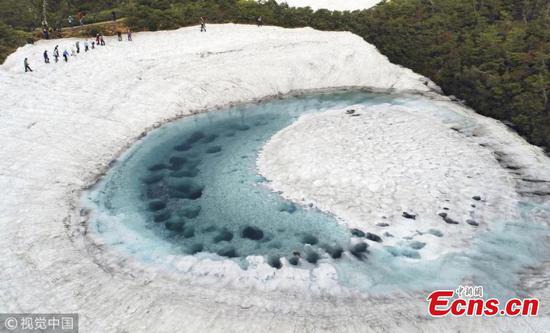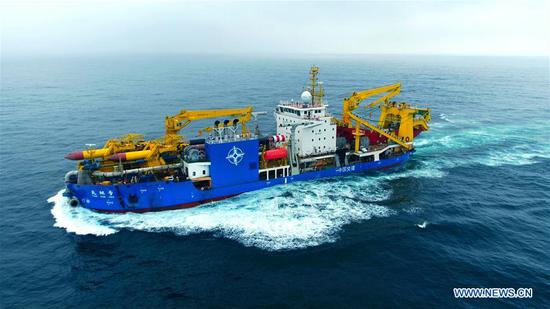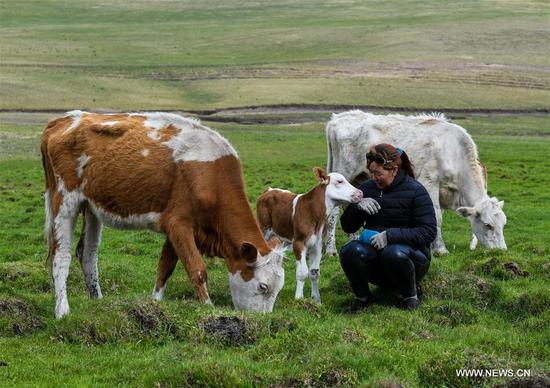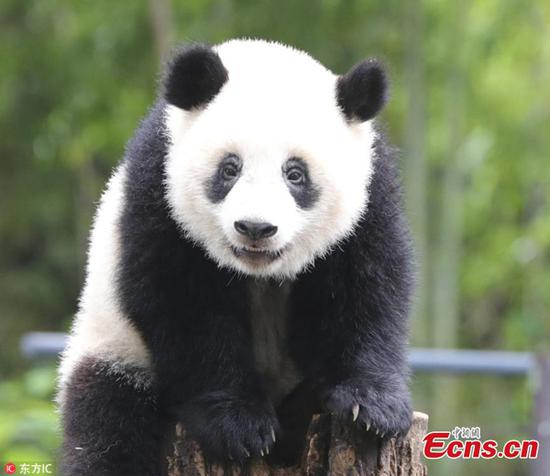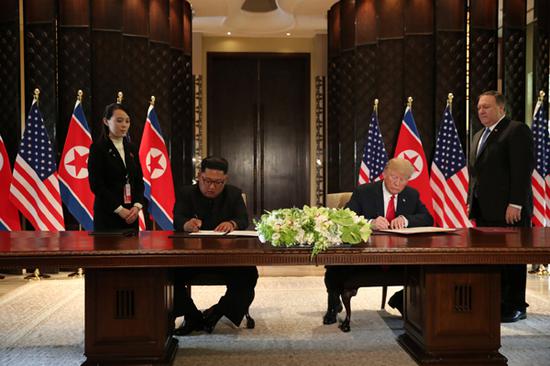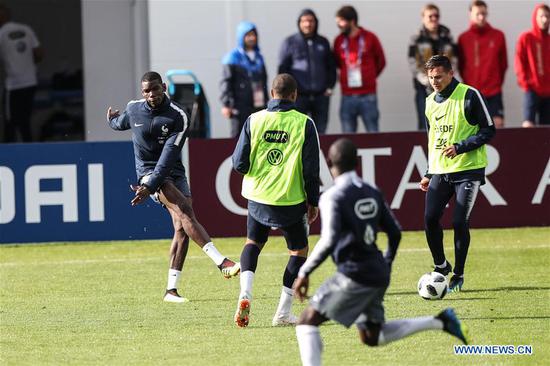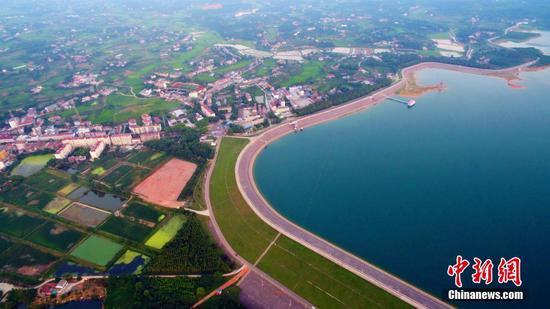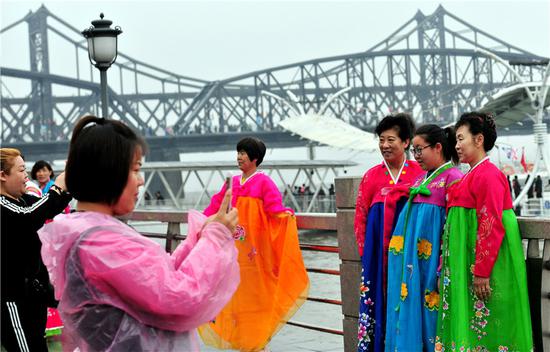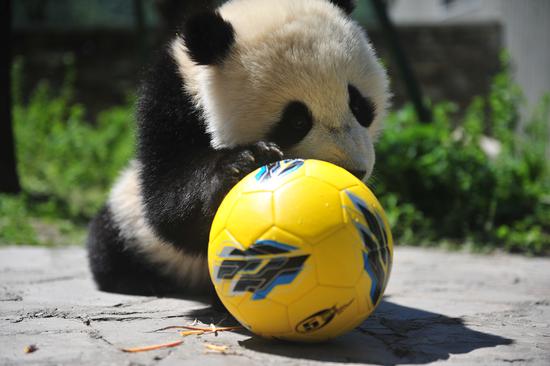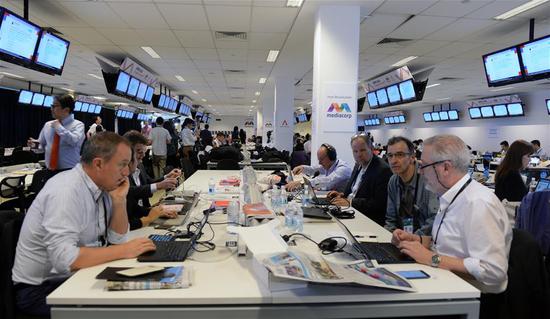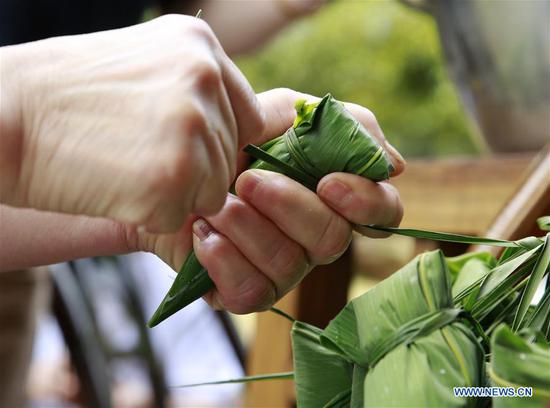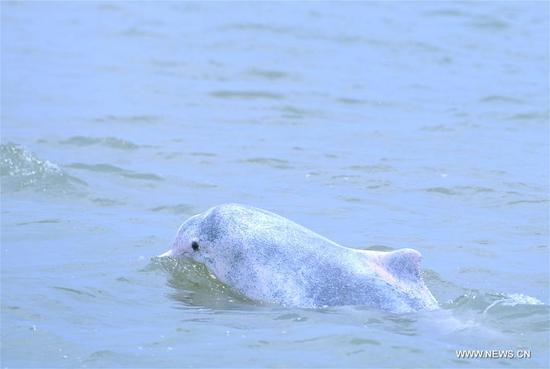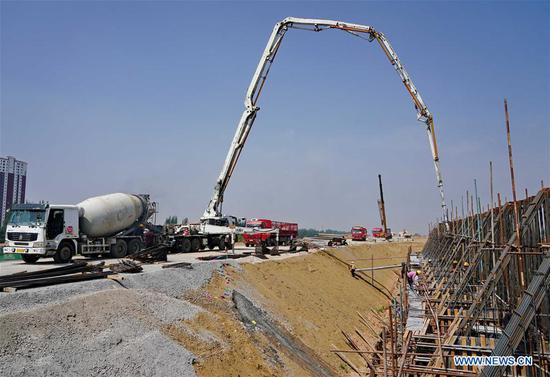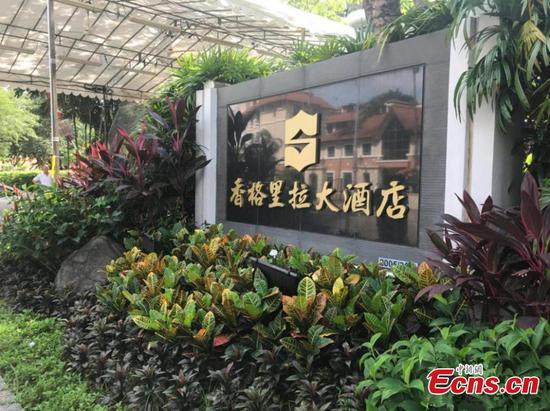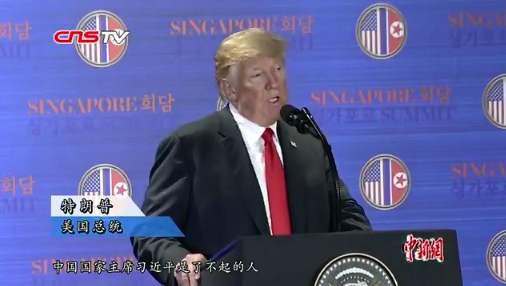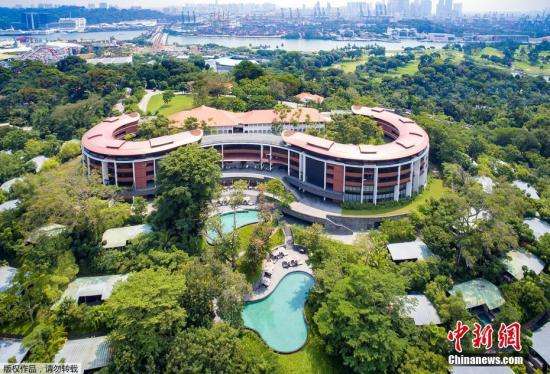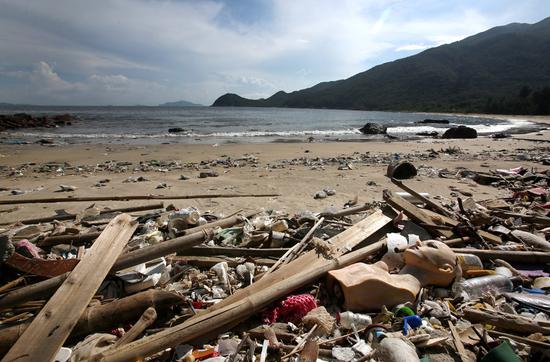
Ocean debris lies on the beach at Big Wave Bay in Shek O, Hong Kong. (Photo by PARKER ZHENG/CHINA DAILY)
Researchers are working to preserve marine diversity in the city's coastal waters in the face of climate change, toxins and human activity, as Sylvia Chang reports.
It's easy for people in Hong Kong to be complacent - or even a little smug - about the fantastic abundance of marine life in the waters surrounding the city. However, what most people do not see is the frantic juggling act underway to save many of these marine species from extinction. It's a work in progress, focused on scientific, region-specific criteria for every precinct of Hong Kong's marine environment.
More than 6,500 marine species live in Hong Kong's coastal waters. These waters comprise just 1,650 square kilometers, or about 0.03 percent of the nation's coastal waters, yet they are home to 25 percent of all China's marine species.
The diversity of marine life makes Hong Kong special and particularly important among coastal cities anywhere in the world.
Hong Kong also is one of the biggest seaports on the globe. That's where the juggling act starts, because the waters adjacent are polluted by chemicals from nearby industries and even farms. The chemical-based paint on the hulls of vessels, accidents involving ships' cargoes and other misadventures pose direct threats to the city's marine life.
However, behind the concerns about human activity are other vital issues, painted against the broader backdrop of global warming.
Falling salinity levels
Hong Kong's marine environment is strikingly diverse. For example, the western waters, fed by the Pearl River, experience an estuary effect. During heavy rainfall, more freshwater pours into the ecosystem, and the salinity of the seawater drops correspondingly as the rainfall increases.
The area is home to the flathead grey mullet. The fish, an important source of food, thrives in estuaries and rivers, and its optimal environment occurs within a delicate balance of freshwater and seawater. What happens when there's heavy rain? Water salinity levels fall, and the flathead mullet becomes more susceptible to disease and the effects of water pollution. Compound that with the effects of global warming and you get some sense of what scientists are up against as they try to preserve marine species such as the flathead grey mullet.
In contrast to the western waters, the waters on the eastern side of Hong Kong are fed primarily by the South China Sea. Salinity levels are high and different species in the area are dependent on a different set of environmental values.
All the factors that affect the well-being of marine life are in constant flux. Intensifying climate change and day-to-day variables present scientists with the challenge of defining site-specific criteria for water quality to help preserve marine species from the Sixth Great Extinction.
"Each marine species has a tolerance limit for how many toxicants it can accept. Once the concentration of the toxicant in the body goes beyond that limit, the health of the species is affected, leading to poor growth, reproductive decline, higher mortality and ultimately to population decline and even extinction," said Kenneth Leung Mei-yee, professor of aquatic ecology and toxicology at the School of Biological Sciences at the University of Hong Kong.
The flathead grey mullet is by no means unique. Many species of cold-blooded marine life and algae are affected in the same way, as they are highly sensitive to fluctuating salinity and water temperature, Leung said. In the heat of summer, the mortality rate of these species climbs, especially in proximity to agricultural or industrial activities.
Fluctuating fortunes
Almost every region in the world has drawn up its own set of water quality criteria, which protect local species from chemical contaminants.
Often these criteria are based on toxicity data generated under standardized laboratory conditions, including fixed water salinity, temperature and pH levels (the balance between acidity and alkalinity).
In tropical and subtropical regions similar to Hong Kong, the laboratory temperature is usually fixed at 25 C. However, lab-based conditions don't match real marine conditions, which change according to the day and the season.
Hence, the lab-driven water quality criteria may not provide marine organisms with adequate protection. According to Leung, what's needed is a gauge that takes account of aggregate sea conditions, including salinity, temperature and other potentially influential environmental factors.
The fluctuating condition of these factors plays a specific role in determining the metal toxicity of the immediate marine environment. Production of metal pollution has been rising annually as a result of farming, industrial activity and ordinary day-to-day activities. However, metal toxicity has an immense impact on the marine environment.










